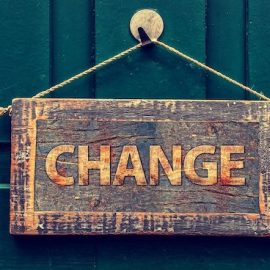

This article is an excerpt from the Shortform book guide to "The Dictionary of Body Language" by Joe Navarro. Shortform has the world's best summaries and analyses of books you should be reading.
Like this article? Sign up for a free trial here.
How confident are you that you can read body language accurately? Do you know how to read cues collectively or just individually?
You can use many body language cues to reliably and consistently assess someone’s emotional state. But, retired FBI Special Agent Joe Navarro says that there are some contextual factors to consider before forming conclusions based on your observations.
Read more to get an introduction to body language from Navarro by exploring two of his tips for assessing the context of cues.
Tip #1: Determine What’s “Abnormal” on an Individual Basis
Navarro’s introduction to body language starts with determining a baseline of behavior for the person you’re interacting with. He states that, when you’re observing many body language cues, it’s important to consider whether the action is ordinary or unusual for the person doing it before ascribing any particular meaning to it. A cue that indicates a strong emotion for one person may just be a habitual behavior for another.
For example, sweating can be an indicator of high stress, but some people also just sweat more than others. Therefore, to accurately judge what it means if someone’s sweating a lot, you’d have to know what’s normal for that person.
(Shortform note: If you sweat easily when you aren’t stressed or exerting yourself, you may suffer from “excessive sweating,” or hyperhidrosis. A dermatologist can determine if your level of sweating is normal and help you treat it. To manage your symptoms, some experts suggest using an antiperspirant instead of deodorant and recording information about your sweating in a journal to isolate your sweat triggers.)
| Create a “Mental Baseline” of People’s Behavior In What Every BODY Is Saying, Navarro argues that to skillfully observe the individualized nature of body language, you must make a mental record of a person’s behaviors at the start of your interaction. Take into account their physical appearance, hygiene, and behavior—for instance, whether they’re loose, relaxed, and well-groomed, or stiff, fidgety, and unkempt. Additionally, consider the situation they’re in. For example, you should expect someone at a job interview to show more nervous behavior than someone shopping at a grocery store. This information provides a “baseline” of the person’s behavior—in other words, a sense of what’s “normal” for them, both generally and in their specific current context. You can then measure future observations of their body language against this baseline to see if they’re still behaving “normally” for them. |
Tip #2: Assess Body Language Cues Collectively
Some body language cues may have multiple meanings. Therefore, Navarro suggests taking a person’s whole body language into account before deciding what a particular cue means. The combination of cues will typically paint a clearer picture of someone’s emotional state than an isolated one.
For example, when someone smiles at another person, we typically perceive it as a cue of affection, kindness, or joy. However, a smile on its own doesn’t present the whole picture. If the person is displaying signs of tension or discomfort as well—if the muscles around their eyes are tense, their feet are pointed away from the person they’re talking to, and so on—then their smile may not represent true affection or friendliness, but forced friendliness that hides discomfort.
| The Social Importance of Reading Body Language Cues Collectively A possible danger of reading body language cues in isolation is misinterpreting someone else’s true feelings. This can lead to miscommunications that leave people feeling awkward, uncomfortable, or even unsafe. For example, studies suggest that women often smile when they feel uncomfortable. However, some men interpret these smiles as signs of affection and make unwanted romantic advances, leading to women feeling unsafe. Considering additional body language cues, such as crossed arms, feet pointing away, or tension around the eyes might prevent this miscommunication. Likewise, we may miss that someone is lying to us because we rely on the common assumption that liars avoid eye contact. One study found that people engaged in more eye contact when lying than telling the truth: Since eye contact is such a commonly known indicator of deceit, they overcompensated. Again, assessing a potential liar’s other cues—such as whether they’re fidgeting or sweating—in tandem with their level of eye contact may give a clearer picture of their honesty. |

———End of Preview———
Like what you just read? Read the rest of the world's best book summary and analysis of Joe Navarro's "The Dictionary of Body Language" at Shortform.
Here's what you'll find in our full The Dictionary of Body Language summary:
- A former FBI Special Agent's guide to body language
- Why you should assess body language cues collectively, not individually
- The body language cues that indicate stress, boredom, anger, doubt, and more






